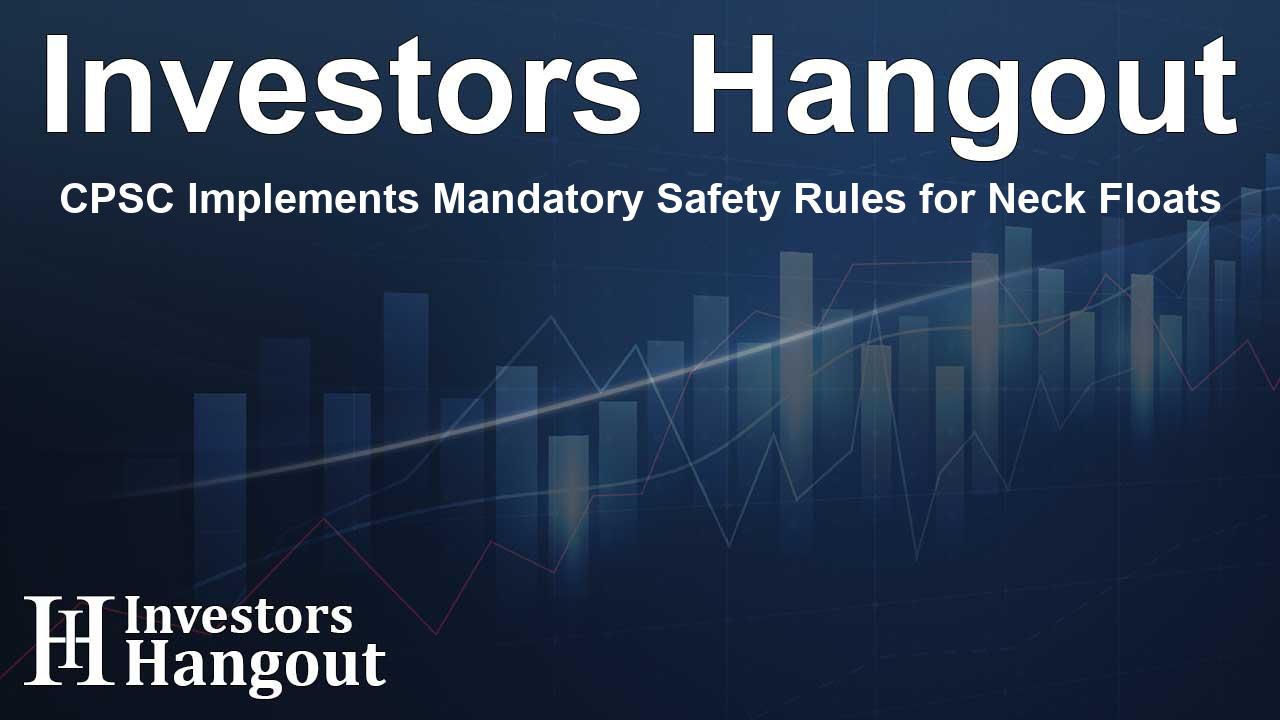CPSC Implements Mandatory Safety Rules for Neck Floats

New Safety Standards for Neck Floats Introduced by CPSC
The U.S. Consumer Product Safety Commission (CPSC) has taken a significant step in child safety by launching a new federal safety standard specifically for neck floats. Designed for children from birth to four years of age, these aquatic toys have been flagged for their potential risks, leading the CPSC to approve this mandatory regulation aimed to prevent fatal injuries and drowning incidents.
The Design of Neck Floats and Associated Risks
Neck floats resemble ring-shaped tubes designed to wrap around a child's neck, ideally keeping their head above the water while allowing their body to float. While they are marketed as fun and safe toys for young children, they carry inherent risks that have raised numerous concerns among caregivers and safety officials.
The primary goal of the newly implemented safety standard is to tackle potential drowning hazards linked to the usage of neck floats. The CPSC identified critical risks that can result in accidents:
- Child slipping through the neck float due to inflation issues such as deflation or underinflation.
- Child slipping through for reasons unrelated to inflation.
- Child slipping through due to failure in the product's restraint system.
- Child submerging in water while still in the neck float.
Details of the New Rule and Its Implementation
This new regulation compels manufacturers to follow a series of performance requirements and adjust their labeling practices. Each neck float must carry explicit warnings that inform caregivers about the risks involved with usage. The safety standard becomes effective 180 days from its publication in the Federal Register, ensuring ample time for compliance across the industry.
Notably, flotation devices governed by the U.S. Coast Guard, which may securely attach to a user’s neck, are not included in this regulation.
Incident Reports and Safety Measures
According to reports from the CPSC, there have been 115 documented incidents involving neck floats, which include two tragic cases of infant fatalities and two serious injuries leading to hospitalization between January 2019 and January 2024. Fortunately, diligent caregivers have often intervened in critical moments, preventing more fatalities. The ages of the infants involved in these cases ranged from as young as 17 days to 12 months.
Acting CPSC Chairman, Peter A. Feldman emphasized the importance of the regulation, stating, "Neck floats have always been a suspect product, offering caregivers a false sense of security... This regulation empowers us to further protect our vulnerable children and helps combat drowning — the leading cause of death among young children aged one to four.”
Critical Advice for Caregivers Using Neck Floats
Given the serious nature of drowning risks associated with neck floats, the CPSC recommends specific safety measures for caregivers:
- Remain within arm's reach of the child while using neck floats and maintain constant visual contact to ensure the child's mouth and nose stay above the water.
- Adhere to the guidelines regarding age and weight limits specified on the product label.
- For items with inflatable parts, follow the manufacturer’s instructions for inflation and routinely inspect for any leaks before use.
By following these guidelines, caregivers can help ensure safer aquatic experiences for their children.
About the CPSC and Its Role in Safety
The U.S. Consumer Product Safety Commission plays a critical role in safeguarding the public against unreasonable risks associated with countless consumer products. Every year, incidents related to consumer products result in over $1 trillion in costs due to injuries and damage. Established over half a century ago, the CPSC has focused efforts on ensuring the safety of products available to consumers, significantly reducing injury rates associated with various items.
It is also crucial to note that federal law prohibits the sale of products that are under a Commission-ordered recall, preserving the safety of consumers from hazardous products.
Frequently Asked Questions
What are neck floats and their intended use for infants?
Neck floats are aquatic toys designed for children up to four years old, allowing their heads to float above water while their bodies support them. However, they can pose drowning risks.
What new regulations has the CPSC enacted for neck floats?
The CPSC has established mandatory safety standards for neck floats, including performance and labeling requirements, to enhance child safety and prevent accidents.
What safety measures should caregivers follow with neck floats?
Caregivers should always be within arm's reach of children, follow the indicated weight and age limits, and ensure proper inflation of the floats before use.
Why are neck floats considered risky products?
Neck floats have been labeled risky due to incidents where children can slip through if the float fails in any capacity, potentially leading to drownings.
How does the CPSC enforce product safety regulations?
The CPSC monitors compliance with safety standards and prohibits the sale of recalled or hazardous products, ensuring public safety in consumer goods.
About The Author
Contact Olivia Taylor privately here. Or send an email with ATTN: Olivia Taylor as the subject to contact@investorshangout.com.
About Investors Hangout
Investors Hangout is a leading online stock forum for financial discussion and learning, offering a wide range of free tools and resources. It draws in traders of all levels, who exchange market knowledge, investigate trading tactics, and keep an eye on industry developments in real time. Featuring financial articles, stock message boards, quotes, charts, company profiles, and live news updates. Through cooperative learning and a wealth of informational resources, it helps users from novices creating their first portfolios to experts honing their techniques. Join Investors Hangout today: https://investorshangout.com/
The content of this article is based on factual, publicly available information and does not represent legal, financial, or investment advice. Investors Hangout does not offer financial advice, and the author is not a licensed financial advisor. Consult a qualified advisor before making any financial or investment decisions based on this article. This article should not be considered advice to purchase, sell, or hold any securities or other investments. If any of the material provided here is inaccurate, please contact us for corrections.
